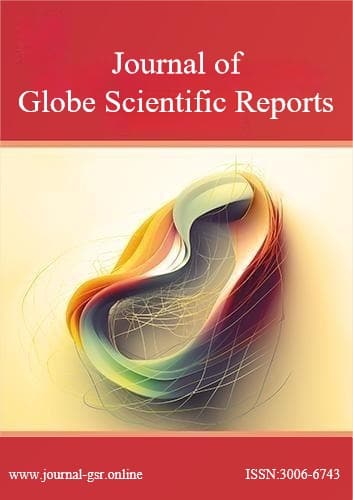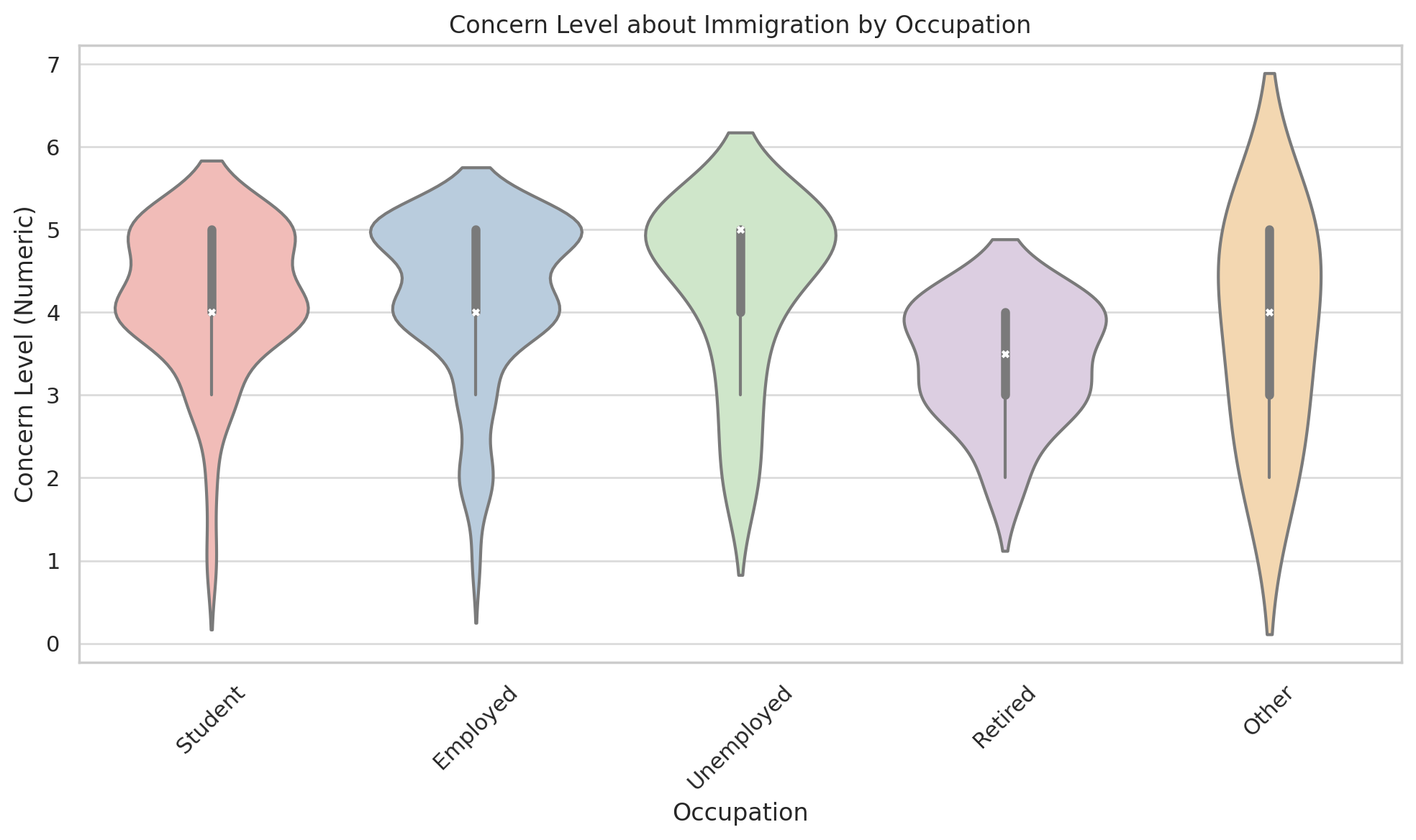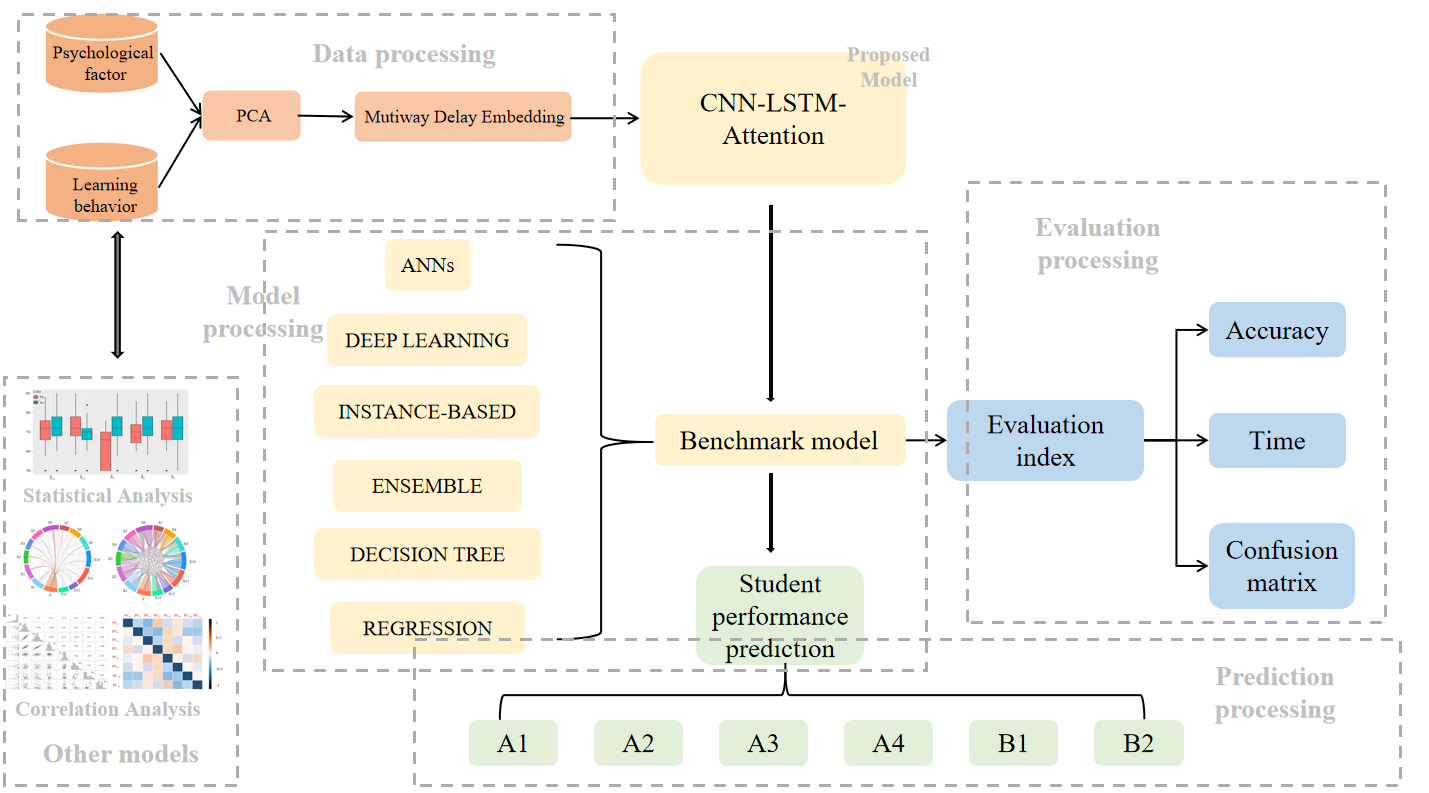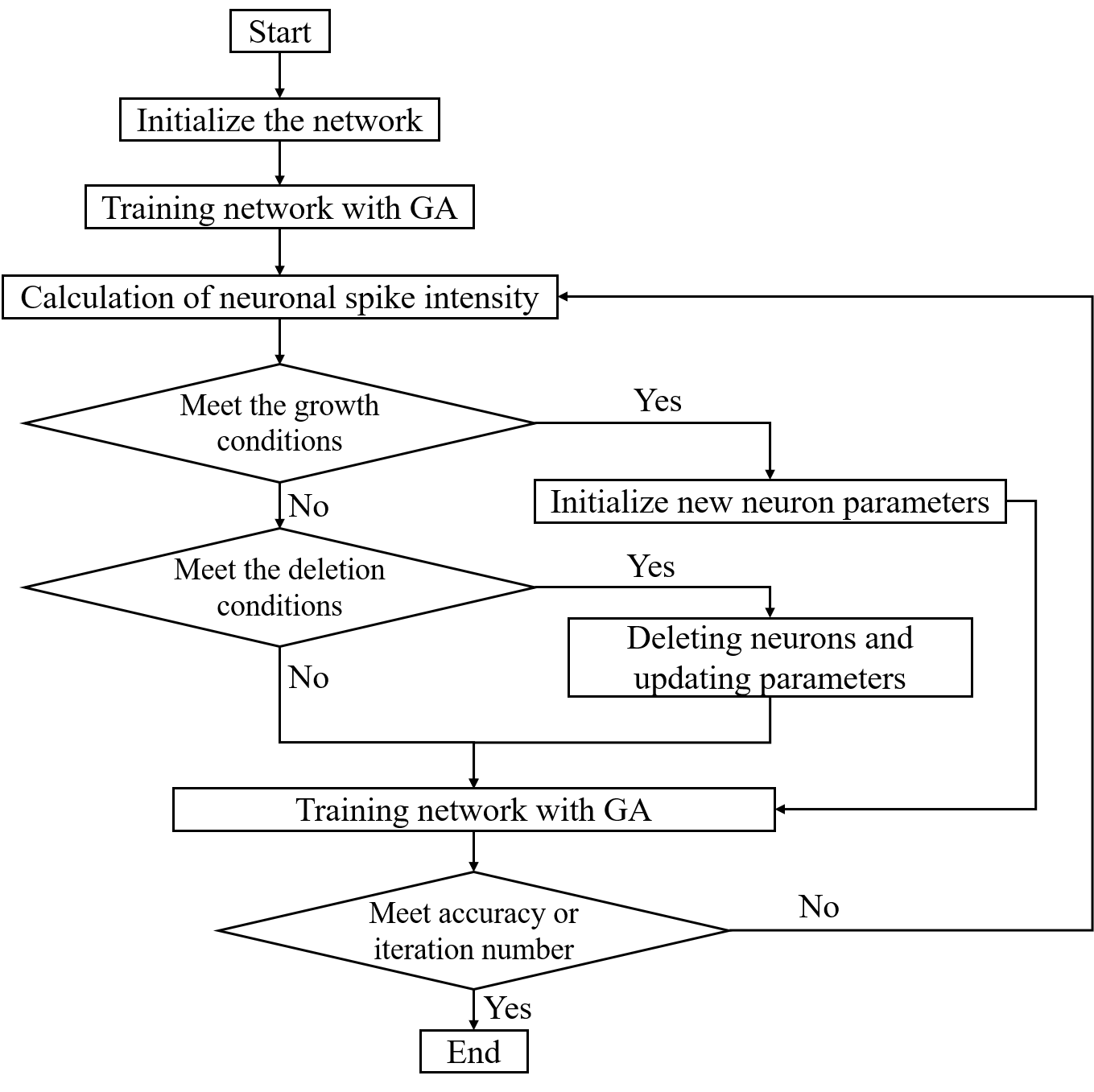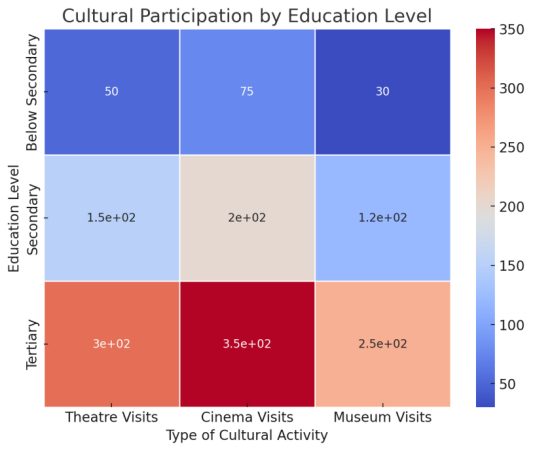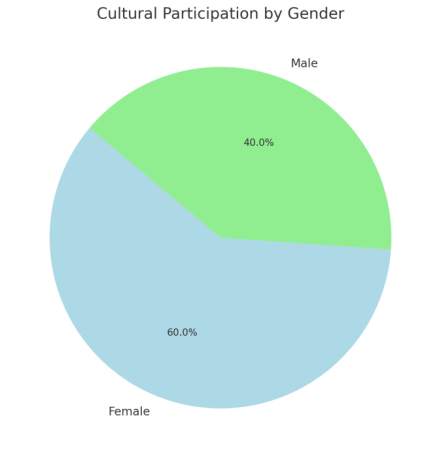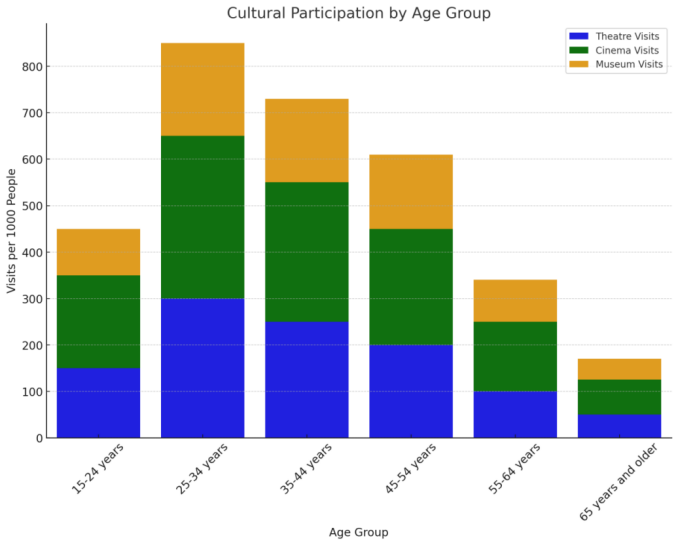 An open access journal
An open access journal
Analysis of Cultural Participation Across Different Regions and Population Groups in Estonia
Abstract
This study examines cultural participation patterns across different regions and demographic groups in Estonia, utilizing data from the Estonian Statistics Bureau. The analysis reveals significant disparities in cultural engagement, with Harju County, including Tallinn, exhibiting the highest participation rates in theatre, cinema, and museum visits. In contrast, rural areas such as Hiiu and Jõgeva counties show markedly lower engagement, highlighting a pronounced urban-rural divide. Demographically, middle-aged adults (25-44 years) and those with tertiary education are the most culturally active, while women participate more in cultural activities compared to men. Cinema visits emerged as the most popular cultural activity, appealing broadly across all groups, whereas theatre and museum visits were more associated with higher educational attainment and urban residency. Based on these findings, the study recommends targeted cultural policies, including increased investment in rural cultural infrastructure, the promotion of cultural education, and the enhancement of digital access to cultural content. Additionally, tailored cultural programs to address demographic disparities are suggested. The study also identifies areas for future research, including longitudinal studies on cultural participation trends, the impact of digital platforms, and the economic implications of cultural engagement. These insights aim to inform more equitable and effective cultural policy-making in Estonia.
Show Figures
Share and Cite
Article Metrics
References
- Bourdieu, P. (1984). Distinction: A Social Critique of the Judgement of Taste. Harvard University Press.
- Cuypers, K., Krokstad, S., Holmen, T. L., Knudtsen, M. S., Bygren, L. O., & Holmen, J. (2012). Patterns of Receptive and Creative Cultural Activities and Their Association with Perceived Health, Anxiety, Depression and Satisfaction with Life among Adults: The HUNT Study, Norway. Journal of Epidemiology & Community Health, 66(8), 698-703.
- Evans, G. (2003). Hard-Branding the Cultural City – From Prado to Prada. International Journal of Urban and Regional Research, 27(2), 417-440.
- Estonian Ministry of Culture. (2019). Cultural Policy Guidelines 2020-2030. Retrieved from https://www.kul.ee
- Kalmus, V., Lauristin, M., & Pruulmann-Vengerfeldt, P. (Eds.). (2013). Estonian Human Development Report 2012/2013: Culture as a Catalyst of Change. Estonian Cooperation Assembly.
- Matarasso, F. (1997). Use or Ornament? The Social Impact of Participation in the Arts. Comedia.
- OECD. (2015). Cultural and Creative Industries in the Digital Economy. OECD Publishing.
- Pihlak, A., & Meri, T. (2017). Cultural Consumption in Estonia: An Analysis Based on the 2015 Population Survey. Journal of Baltic Studies, 48(2), 205-226.
- Putnam, R. D. (2000). Bowling Alone: The Collapse and Revival of American Community. Simon & Schuster.
- UNESCO. (2009). Investing in Cultural Diversity and Intercultural Dialogue. UNESCO Publishing.
- Bennett, T. (2001). Differentiating Cultural Participation: Ontologies of Cultural Access. In Differentiation and Identity in Higher Education: Principles and Practice (pp. 165-180). Routledge.
- McCarthy, K. F., Ondaatje, E. H., Zakaras, L., & Brooks, A. (2004). Gifts of the Muse: Reframing the Debate About the Benefits of the Arts. RAND Corporation.
- Mulcahy, K. V. (2006). Cultural Policy: Definitions and Theoretical Approaches. The Journal of Arts Management, Law, and Society, 35(4), 319-330.
- DiMaggio, P., & Useem, M. (1978). Social Class and Arts Consumption. Theory and Society, 5(2), 141-161.
- Throsby, D. (2001). Economics and Culture. Cambridge University Press.
- Rentschler, R. (2002). The Entrepreneurial Arts Leader: Cultural Policy, Change, and Reinvention. University of Queensland Press.
- Skot-Hansen, D., Andersen, I. E., & Sonneson, J. (2013). Culture and Local Governance: A Case Study of Four Danish Municipalities. Nordic Journal of Cultural Policy, 16(1), 39-59.
- Hylmö, A., & Svensson, P. (2013). The Role of Cultural Capital in the Development of Sustainable Cities. Sustainable Development, 21(3), 203-210.
- Hawkins, G. (2001). Culture and Citizenship: An Introduction. In G. Hawkins (Ed.), Culture and Citizenship (pp. 1-16). Routledge.
- Miles, A., & Sullivan, A. (2012). Understanding the Relationship between Taste and Value in Culture and Education: A Quantitative Analysis of Cultural Capital and the Social Reproduction of Inequality. Sociological Review, 60(4), 709-728.
- Bennett, T., Savage, M., Silva, E. B., Warde, A., Gayo-Cal, M., & Wright, D. (2009). Culture, Class, Distinction. Routledge.
- DiMaggio, P., & Mukhtar, T. (2004). Arts Participation as Cultural Capital in the United States, 1982–2002: Signs of Decline? Poetics, 32(2), 169-194.
- Throsby, D., & Zednik, A. (2011). Multiple Job-holding and Artistic Careers: Some Empirical Evidence. Cultural Trends, 20(1), 9-24.
- Bihagen, E., & Katz-Gerro, T. (2000). Culture Consumption in Sweden: The Stability of Gender Differences. Poetics, 27(5-6), 327-349.
- Chan, T. W., & Goldthorpe, J. H. (2007). Social Stratification and Cultural Consumption: Music in England. European Sociological Review, 23(1), 1-19.
- Lamont, M., & Lareau, A. (1988). Cultural Capital: Allusions, Gaps and Glissandos in Recent Theoretical Developments. Sociological Theory, 6(2), 153-168.
- Lizardo, O. (2006). How Cultural Tastes Shape Personal Networks. American Sociological Review, 71(5), 778-807.
- Peterson, R. A., & Kern, R. M. (1996). Changing Highbrow Taste: From Snob to Omnivore. American Sociological Review, 61(5), 900-907.
- Savage, M., Gayo-Cal, M., Warde, A., & Wright, D. (2005). Cultural Capital in the UK: A Comparative Analysis of the 1990s and 2000s. Cultural Trends, 14(2), 111-130.
- Van Rees, K., Vermunt, J., & Verboord, M. (1999). Cultural Classifications under Discussion: Latent Class Analysis of Highbrow and Lowbrow Reading. Poetics, 26(5-6), 349-365.
- Katz-Gerro, T. (2002). Highbrow Cultural Consumption and Class Distinction in Italy, Israel, West Germany, Sweden, and the United States. Social Forces, 81(1), 207-229.
- Coulangeon, P. (2013). Social Mobility and Cultural Capital: A Reassessment of the Cultural Reproduction Theory of Social Stratification. American Journal of Sociology, 118(5), 1173-1201.
- Van Eijck, K., & Knulst, W. (2005). No More Need for Snobbism: Highbrow Cultural Participation in a Taste Democracy. European Sociological Review, 21(5), 513-528.
- Warde, A., Wright, D., & Gayo-Cal, M. (2007). Understanding Cultural Omnivorousness: Or, the Myth of the Cultural Omnivore. Cultural Sociology, 1(2), 143-164.
- Bryson, B. (1996). "Anything But Heavy Metal": Symbolic Exclusion and Musical Dislikes. American Sociological Review, 61(5), 884-899.
- Erickson, B. H. (1996). Culture, Class, and Connections. American Journal of Sociology, 102(1), 217-251.
- Kraaykamp, G. (2001). Parents, Cultural Education, and Cultural Participation: A Trivariate Model of the Cultural Involvement of Adolescents. Social Science Research, 30(4), 556-576.
- Purhonen, S., Gronow, J., & Rahkonen, K. (2009). Social Differentiation of Musical and Literary Taste Patterns in Finland. Research on Finnish Society, 2, 39-49.
- Ganzeboom, H. B., & de Graaf, P. M. (1991). Cultural Reproduction and Educational Stratification. American Sociological Review, 56(2), 212-225.
- Sullivan, A. (2001). Cultural Capital and Educational Attainment. Sociology, 35(4), 893-912.

